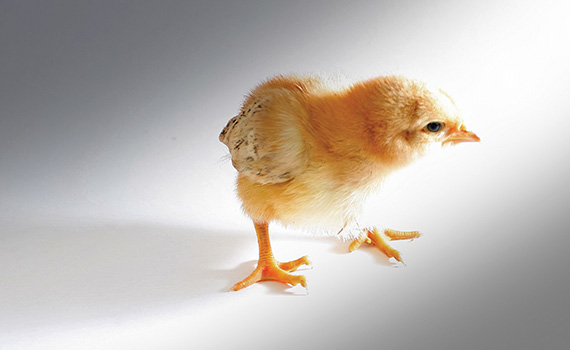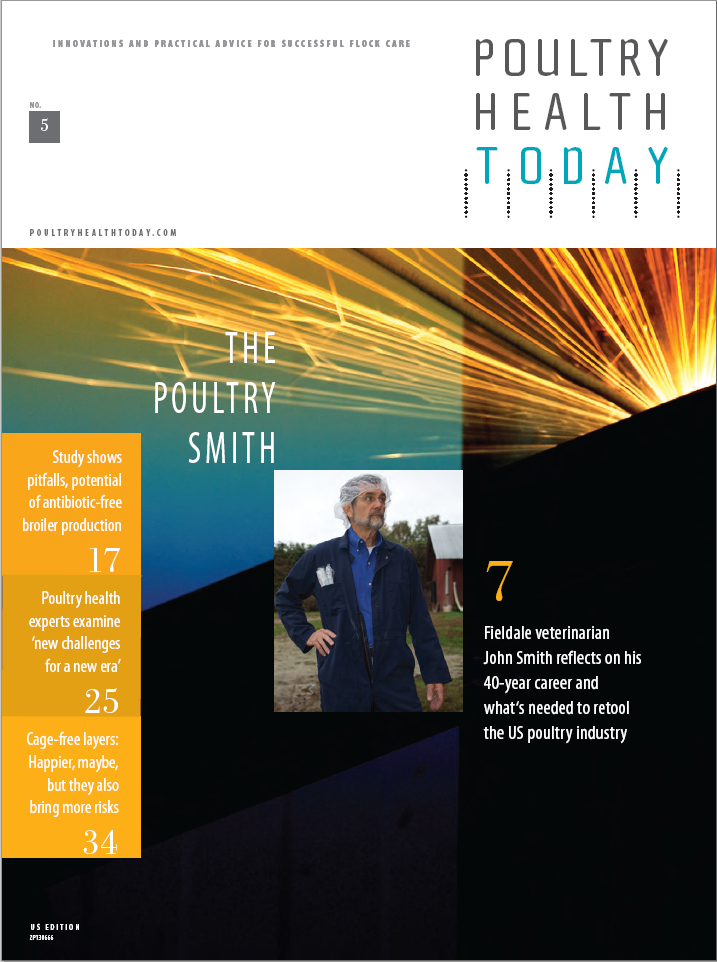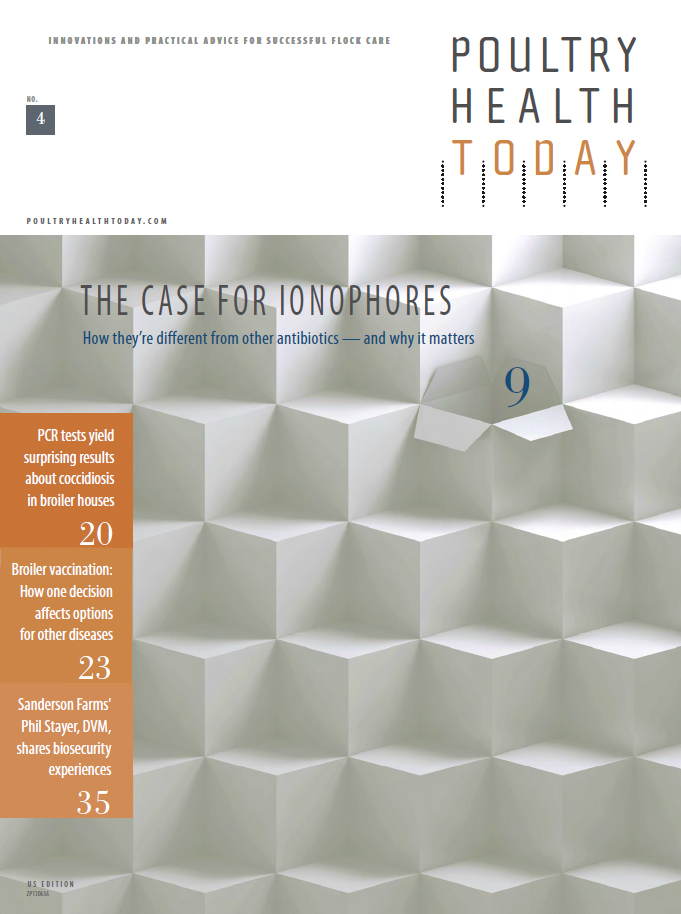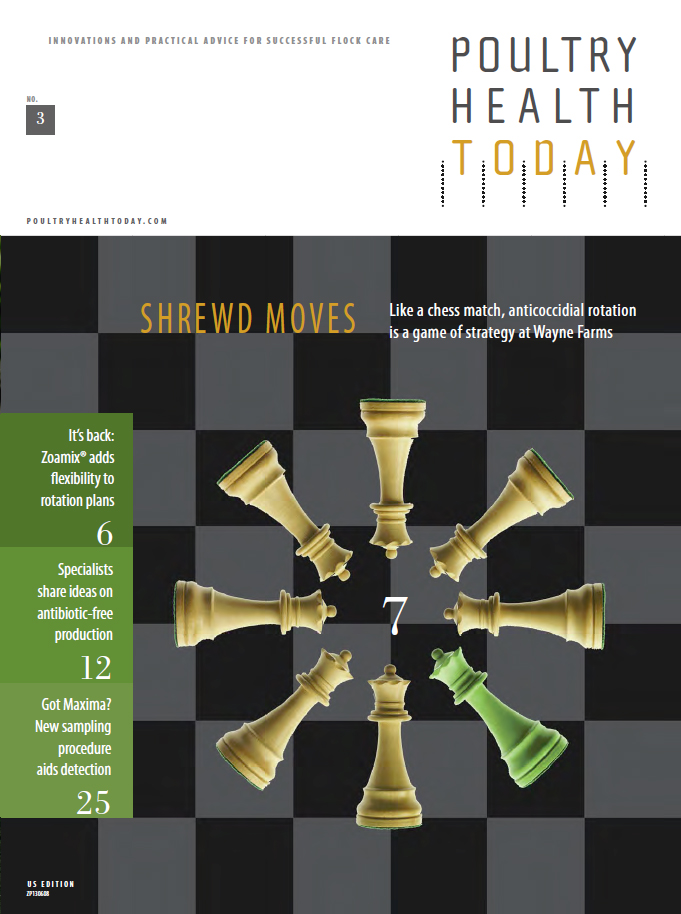

Marketing vs. Medicine: Finding the balance

Poultry health specialists at a recent roundtable expressed frustration over what they said are sometimes misguided marketing strategies that are fueling the antibiotic-free production trend.
“We’ve got to get [these restaurants and retailers] who are beating their chests about not allowing antibiotics to be used in animal production to understand that they’re going to be buying sick chickens — unless they allow the targeted use of so-called shared-class drugs to keep chickens reasonably healthy. that’s the humane and sustainable plan they should be promoting,” Practitioner 2* said.
Steve Davis, DVM, of Colorado Quality Research maintained that food vendors promoting chicken raised without antibiotics don’t want to hear about the perils of antibiotic-free production. “what’s best for food-marketing campaigns is not what’s best for our patients — the chickens — especially when their mortality is doubled.”
McDonald’s policy
McDonald’s USA’s new policy permitting the use of ionophores in chickens it buys was lauded by some of the experts, but they also said the fast-food giant didn’t get it quite right.
“[McDonald’s USA] will allow ionophores but not allow treatment, control or prevention with other antibiotics that are approved by FDA,” Practitioner 2 argued. “So, if you treat sick chickens, McDonald’s [USA] is not going to buy them. that’s its US policy. Its global policy allows for treating sick animals.” NC State’s Dennis Wages, DVM said some of the antibiotics prohibited by McDonald’s USA’s policy, such as bacitracin and virginiamycin, have no significant use in human medicine and they’re sorely needed in poultry to prevent and control clostridia, but they won’t be used in chickens going to McDonald’s. “I think it’s a shame,” he added.
Vocal minority
Practitioner 2 pointed out that antibiotic-free production accounts for only 15% to 20% of poultry production in the US. the veterinarian believes those who promote this type of production want to impose their agenda on consumers who want the same, affordable, safe products the industry has been providing all along with the judicious use of FDA-approved medications.
The typical McDonald’s customer probably isn’t thinking about antibiotic use in food animals when searching for an affordable meal. “But McDonald’s sales are down, they’ve got a new CEO, they’re trying to make a difference and wanted to make a splash. we’re getting whipsawed in that marketing game,” the veterinarian said.
Industry culpability
University of Georgia’s Charles Hofacre, PhD agreed the US poultry industry has some culpability for the emergence of this two-tiered poultry market. “we’ve done it to ourselves,” he said, referring to some industry and retailer marketing practices. “we’ve led the public to believe through marketing that if we can raise 20% of chickens without antibiotics, we can do it with 100%.”
If the industry continues in this direction, Hofacre added, it’s going to steamroll so that even companies that don’t want to will be forced to raise chickens without antibiotics. Production techniques will be driven by the preferences of consumers who know very little about chicken production, not what’s best for flock health and welfare.
Roundtable moderator Lloyd Keck, DVM, of Zoetis, pointed out that market research by his company has demonstrated that with education, consumers develop a better understanding of antibiotics and, in turn, become more accepting of them — especially when they learn that veterinarians are involved. he asked the panel if it might be possible to educate consumers on a broad scale about the health and welfare problems created by antibiotic-free production.
Hofacre said it’s probably futile to try and convert a certain small segment of US consumers that have already formed strong opinions about antibiotics in agriculture. “We need to just forget about them.” that said, he agreed the vast majority of US consumers still don’t understand the role of antibiotics in poultry production and that education would be helpful.
Focus on vendors
Practitioner 3* suggested that instead of trying to educate consumers, producers should consider educating food vendors — a smaller group of decision makers with a vested interest in food safety.
“We’ve been bringing [in] our customers, who are large food vendors — the ones who make the decisions about the type of chicken their companies buy…we let them go through our facilities, including our hatcheries and farms.
“I have a window of opportunity when I give a presentation on antibiotic usage. I tell them that ‘I’m a veterinarian and I have a family.’ I always show a picture of my family and say, ‘you know, I feed my two small children conventional chicken.’ And then I talk about the oath, the veterinary oath, and it seems to resonate,” Practitioner 3 said.
*Editor’s note: Three production veterinarians from major US poultry companies participated in this roundtable discussion with the understanding that their names and affiliations would be withheld from published reports. This agreement allowed them to be more candid with their views and personal experiences. They are identified here as Practitioners 1, 2 and 3.
More Issues












